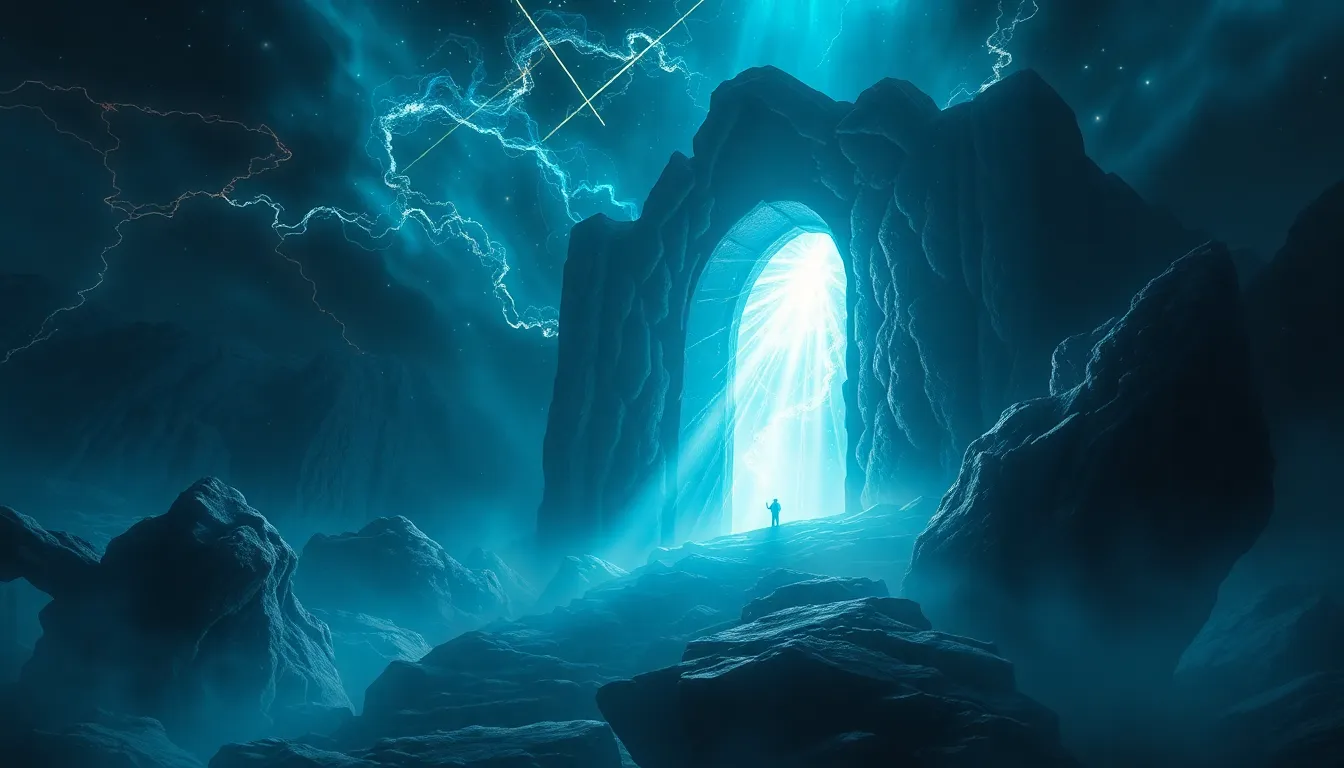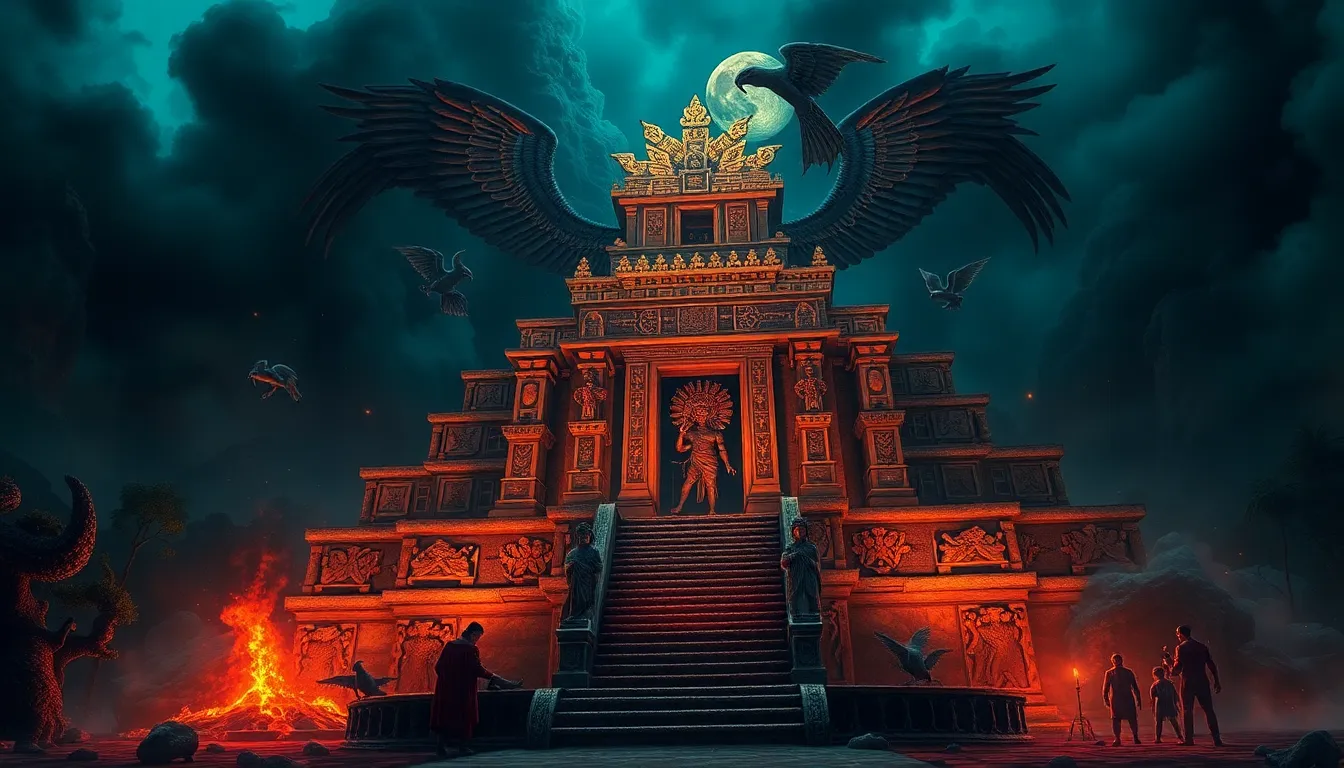The Legendary Kingdom of the Underworld: Myths of Death and Afterlife
I. Introduction
The concept of the Underworld varies significantly across different cultures, often serving as a realm where souls go after death. Traditionally, it is depicted as a place of darkness, mystery, and sometimes torment, reflecting humanity’s fears and fascination with death. Myths surrounding the Underworld are crucial for understanding how societies make sense of mortality, the afterlife, and the moral implications of human existence.
This article will explore various cultural interpretations of the Underworld, historical perspectives, the beings associated with it, the journey of the soul, and how these ancient beliefs continue to influence modern thought and practices regarding death.
II. Historical Perspectives on the Underworld
A. Ancient Mesopotamian beliefs about the afterlife
In ancient Mesopotamia, the Underworld, known as Kur, was a bleak and shadowy place where all souls, regardless of their earthly deeds, ended up after death. The Mesopotamians believed that the soul’s journey after death involved traversing a dark path to reach the Underworld, where they would face a dismal existence.
B. Egyptian underworld: Duat and the journey of the soul
The ancient Egyptians had a more elaborate view of the afterlife, centering around the concept of Duat. This underworld was not only a realm of the dead but also a place of judgment. The deceased would undergo a trial before Osiris, the god of the afterlife, where their heart would be weighed against the feather of Ma’at, symbolizing truth and justice. Depending on the outcome, souls would either be granted eternal life or face annihilation.
C. Greek and Roman concepts: Hades and the River Styx
In Greek mythology, the Underworld, known as Hades, was ruled by the god of the same name. It was depicted as a divided realm with various regions, including Elysium for the blessed, and Tartarus for the wicked. The River Styx served as a boundary between the living and the dead, with Charon, the ferryman, transporting souls across its waters.
III. The Underworld in Eastern Mythologies
A. The role of Yama in Hindu and Buddhist traditions
In Hinduism and Buddhism, Yama is often seen as the god of death and the ruler of the Underworld, known as Naraka. Yama is responsible for guiding souls to the afterlife and determining their fate based on their karma. This belief emphasizes the moral consequences of one’s actions in life.
B. The Chinese concept of Diyu and its philosophical implications
The Chinese Underworld, or Diyu, is a complex realm divided into various courts, each presided over by a judge who assesses souls based on their earthly deeds. Diyu reflects the moral framework of Confucianism, emphasizing virtue and familial respect. This afterlife concept illustrates the importance of moral behavior and the consequences of one’s actions.
C. Shinto beliefs regarding the afterlife and the realm of Yomi
In Shinto, the Japanese religion, the afterlife is represented by Yomi, a realm where the deceased go. Unlike other underworlds, Yomi is considered a place of darkness and is not inherently punitive. The beliefs surrounding Yomi highlight the importance of ancestral veneration and the connection between the living and the spirits of the deceased.
IV. Legendary Beings and Deities of the Underworld
A. Osiris and the Egyptian afterlife
Osiris is one of the most important deities in Egyptian mythology, symbolizing resurrection and the afterlife. He is depicted as a mummified king, representing the cycle of death and rebirth. His story provides pivotal insights into the Egyptians’ beliefs about mortality and the hope for eternal life.
B. Persephone and the seasonal cycle in Greek mythology
Persephone, the daughter of Demeter, is a key figure in Greek mythology associated with the Underworld. Her abduction by Hades and subsequent return to the surface symbolizes the seasonal cycle of life and death. This myth reflects the connection between the natural world and human experiences of loss and renewal.
C. The role of Charon as the ferryman of souls
Charon, the enigmatic ferryman of the Underworld, plays a crucial role in Greek mythology. He is tasked with guiding the souls of the dead across the River Styx. The requirement for payment, often a coin placed in the mouth of the deceased, underscores the significance of proper burial rites and the belief in an afterlife.
V. The Journey of the Soul: Trials and Tribulations
A. The concept of judgment in various cultures
Many cultures share the belief in a judgment process after death. The soul’s fate is determined by various criteria, including moral conduct, adherence to religious principles, and the fulfillment of societal roles. This theme is prevalent in:
- The weighing of the heart in Egyptian mythology.
- The judgment by Yama in Hinduism.
- The trials faced by souls in Diyu.
B. Notable myths about the soul’s journey (e.g., The Epic of Gilgamesh)
In “The Epic of Gilgamesh,” the protagonist embarks on a quest for immortality, encountering various beings and facing the realities of death. This narrative highlights the human struggle against mortality and the search for meaning beyond life.
C. Symbolic representations of death and rebirth
Many myths emphasize the symbolic nature of death and rebirth, illustrating the cyclical nature of existence. This theme resonates across cultures, where death is often seen not as an end but as a transition to another state of being.
VI. Cultural Representations of the Underworld
A. Artistic depictions in ancient art and literature
Ancient art and literature are rich with representations of the Underworld. From the frescoes of Pompeii depicting Hades to the intricate hieroglyphics of the Egyptian Book of the Dead, these artworks serve as visual narratives that convey cultural beliefs about death and the afterlife.
B. Modern portrayals in movies, literature, and video games
Today, the Underworld continues to captivate audiences through various media. Films like “Hercules” and video games such as “God of War” draw heavily on mythological themes, reinterpreting ancient stories for contemporary audiences. These adaptations often explore the complexities of life, death, and the human condition.
C. The evolution of the Underworld in popular culture
The portrayal of the Underworld has evolved over time, reflecting societal changes in attitudes towards death. The shift from fear and punishment to a more nuanced understanding of the afterlife is evident in modern interpretations, which often emphasize redemption and personal growth.
VII. The Influence of Underworld Myths on Modern Beliefs
A. How ancient myths shape contemporary views on death
Ancient myths continue to influence contemporary beliefs about death, providing frameworks for understanding mortality. They often serve as touchstones for discussions about the afterlife, spirituality, and ethical living.
B. The impact of underworld myths on spiritual practices
Many spiritual practices draw from ancient beliefs about the Underworld, incorporating rituals that honor the dead and facilitate communication with ancestral spirits. These practices emphasize the importance of remembering and respecting those who have passed.
C. Rituals and ceremonies influenced by these beliefs
Rituals surrounding death and mourning often reflect ancient mythological influences. Common practices include:
- Funeral rites aimed at ensuring safe passage to the afterlife.
- Memorial services that honor the deceased and support the living.
- Seasonal festivals celebrating life, death, and rebirth.
VIII. Cross-Cultural Comparisons of Afterlife Concepts
A. Common themes across various mythologies
Despite the diversity of beliefs, there are common themes in afterlife concepts, such as judgment, the importance of moral behavior, and the idea of a journey. These shared motifs reflect universal human concerns regarding death and existence.
B. Differences in afterlife destinations (heaven vs. hell vs. reincarnation)
Different cultures offer varied visions of the afterlife. While some envision a paradise (heaven), others depict a realm of punishment (hell) or a cycle of rebirth (reincarnation). These differences


